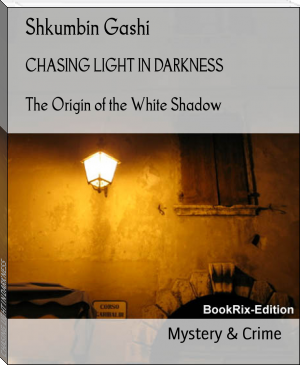The House on Timber Lane by Robert F. Clifton (top business books of all time .txt) 📖

- Author: Robert F. Clifton
Book online «The House on Timber Lane by Robert F. Clifton (top business books of all time .txt) 📖». Author Robert F. Clifton
“I see. And did you receive a request for autopsy from, Mr. Charles Warren?”
“Actually I was served with a warrant for autopsy from Mr. Warren, a court order if you will.”
“A court order you say.”
“Yes.”
“And who was the subject of this warrant for autopsy.”
“Grace Hodges Gray.”
“Did you perform the autopsy?”
“I did.”
“And what did you find Doctor?”
“Where would you like me to start?”
“The beginning please.”
“I began by reading the medical records supplied by Doctors Miller and Silverman. According to their findings their opinion was that Mrs. Gray had suffered from hypoglycemia. As a result my first postmortem examination was to either verify or disprove their findings.”
“And did you verify their findings?”
“Not at that time. Many examinations and clinical test have to be performed before a professional opinion can be rendered.”
“Of course. Please continue Doctor.”
“Both kidneys were removed surgically and examined.”
“And what did you find?”
“Mrs. Gray had no signs of renal disease.”
“What was next Doctor?”
“I looked for and failed to find any traces of glucose in the kidneys.”
“What would that indicate?”
“That in all probability Mrs. Gray had indeed suffered from hypoglycemia.”
“And how would this, this hypoglycemia attack occur, in your opinion.”
“A result of a high dose of insulin.”
“Was Mrs. Gray a diabetic?”
“I have no information nor did I find any evidence that she was.”
“I see, what did you do next?”
“I prepared an antiserum, then taking thin slices of the brain I applied the antiserum to the brain tissue.”
“And what were the results?”
“The brain specimen’s from Mrs. Gray reacted to the antiserum where as normal brain specimens did not.”
“Interesting….Anything else?”
“Using other samples from Mrs. Gray’s brain I then made an extract. I then injected the extract into two, different white mice. Then later, my test on the mice resulted in the lab animals having lower blood glucose.”
“Meaning What?”
“Meaning that Mrs. Gray had a large amount of insulin in her brain.”
“In your examination of the brain Doctor did you find any evidence of glucose?”
“I did not.”
“But you did find evidence of insulin.”
“Yes.”
“In your opinion how much insulin?”
“It is not possible to measure the amount of insulin in the brain and be accurate”,
“But, you did find insulin.”
“Yes, by examining the tissue from the Axilla.”
“And what did you find?”
“I judged the amount to be approximately eighty-four units of insulin.”
“And, I’m assuming that is a large amount.”
“It’s enough to treat one or two diabetics for an entire day.”
“And since Mrs. Gray, to your knowledge was not a diabetic how would that much insulin get into her body.”
“By injection.”
“Do you have any evidence that an injection was made?”
“I do.”
“Please explain.”
“Captain Robert Wallace of the Nautilus Police Department had brought to my attention that it was possible that an injection of insulin used as a murder weapon could be placed where it would be difficult to find. As a result I allowed him to prove or disprove his theory.”
“Did Captain Wallace find such a place on Mrs. Grays body?”
“He did.”
“Where exactly.”
“In the right Axilla.”
“And did you examine that area?”
“I did.”
“And what did you find?”
“I found a mark, representing an entry which could be described as being made by a hypodermic needle.”
“So, what you are telling the court and the jury is that in your postmortem you found an absence of glucose in the kidneys, but a concentration of insulin in the brain and it is your opinion that the insulin was deliberately injected into Mrs. Gray by a hypodermic needle.”
“That is correct.”
“Thank you Doctor…No further questions.”
“Mr. Kaplan, your witness”, said Judge Anderson.
“Thank you your honor. Good morning Doctor.”
“Good morning.”
“If it pleases the court the defense recognizes that Doctor Edwards is very well qualified.”
“Then, you may proceed Mr. Kaplan.”
“Doctor, I listened to your answers to Mr. Moore. I must admit that I found the fact that you allowed a police officer to assist you in you duties as the Medical Examiner rather odd.”
“I never said nor did I imply that any police officer assisted me.”
“Did you or did you not say in this court room not ten or twenty minutes ago that, and I quote you sir, “Captain Robert Wallace of the Nautilus Police Department had brought to my attention that it was possible that an injection used as a murder weapon could be placed where it would be difficult to find. As a result I allowed him to prove or disprove his theory.” Isn’t that what you just testified to?.”
“Yes.”
“Then you admit that you allowed Captain Wallace to assist you in your examination?”
“No…Captain Wallace is the commanding officer of the Major Crime Squad of the Nautilus Beach Police Department. The death of Grace Hodges Gray was determined as a homicide. Captain Wallace in his duties has the right to examine the victim either in an outdoor environment, an indoor environment or if necessary the examination room of the Medical Examiner, which he did, under my supervision.”
“Meaning what?”
“Meaning he could not possibly tamper with the evidence, the evidence at that time being the body of Grace Hodges Gray.”
“And you are saying that by showing you a mark in the underarm of Mrs. Gray Captain Wallace was not assisting you?”
“No more than when he or any police officer attending an autopsy points out particular facts to the examiner, such as the type of weapon used or a particular poison administered.”
“Now, you testified that your examination of the kidney’s resulted in an absence of glucose.”
“Correct.”
“Please tell the court the other test you did on the kidney’s.”
“As I mentioned, there was no sign of renal disease.”
“Condition Doctor, what were the condition of Mrs. Gray’s kidney’s?”
“Normal, healthy.”
“No signs of decomposition?”
“None.”
“How long had Mrs. Gray been dead before you began your examination.”
“Possibly ten maybe twelve hours”
“And you found no signs of decomposition? Didn’t you think that odd Doctor?”
“Not at all. When a patient dies in the hospital as Mrs. Gray died in the Nautilus Beach hospital the body is quickly moved to the morgue where it is immediately refrigerated, thus preventing decomposition.”
“I see, but suppose, just suppose that decomposition no matter how slight did occur how would that affect the kidneys?”
“Decomposition would destroy any glucose in the kidneys.”
“And you testified that you found no glucose in Mrs. Grays kidneys.”
“Correct”
“Lets move on. Did you test blood and urine samples?”
“I did”
“And what did you find”
“Traces of warfarin , glyburide and insulin.”
“Warfarin…please tell the court just what is Warfarin.”
“Warfarin is a medication used by patients suffering from strokes or Mini strokes.”
“Mini strokes, or Ischemtic Attack. Is that correct?”
"That is correct."
“And, glyburide, what is that?”
“A medication given to diabetics.”
“And you testified that you had no knowledge that Mrs. Gray was a diabetic?”
“That’s correct.”
“Yet, you found insulin.”
“Is it not possible then, Doctor that Mrs. Gray suffered from both Mini stokes and diabetes?”
“It’s possible.”
“Thank you Doctor. I have no further questions your honor, however I reserve the right to call this witness at a later time.”
“Granted, Mr. Mason do you wish to cross examine?”
“Thank you your honor. I do have one question if I may. Doctor Edwards with warfarin and glyburide both in the system what if any reaction occurs?”
“The warfarin causes a reaction to the glyburide resulting with the glyburide accelerating its removal of glucose in the blood stream.”
“Then someone injected with large amounts of insulin and also given warfarin plus glyburide would have what kind of reaction?”
“Hypoglycemia.”
“And, in relation to the needle mark. Did you find anything else?”
“Yes a bruising of the right wrist.”
“Like someone had held on to that wrist in a struggle?”
“Objection…no evidence has been submitted about bruising or a struggle”, said Kaplan.
“Sustained, stick to your chain of evidence Mr. Mason”, said the Judge.
“Yes sir. I have no further questions your honor”, said Mason.
“Very well. You may step down Doctor Edwards.”
“Your honor the State has one more witness to be called, one Joan Applewhite. However, all attempts to locate or contact her have failed. As a result the State rests.”, said James Mason.
“Very well Mr. Kaplan you may proceed.”
“Thank you your honor. We call Doctor Nathan Riser to the stand”, said Kaplan.
Wallace and Doctor Edwards sat and watched a man in his sixties, beginning to stoop with age walk slowly to the witness stand. The man wore glasses and was attired in a rumpled grey suit a white shirt with a worn collar and a stained floral print necktie. After he was sworn he took a seat and placed a thick file of papers within reach.
Kaplan walked to where the man sat and said, “Good morning Doctor Riser. Would you please tell the court of your professional background?”
“Certainly, I graduated from U.C.L.A. where I took my premed, then received my Doctorate of Medicine from the University of Southern California.”
“I see and what was or is your specialty?”
“Pathology.”
“Would you please tell the court you previous professional positions.”
“I was the medical examiner for Los Angeles County California for twenty five years.”
“And your current position Doctor.”
“Professor of Forensic Science at the University of California.”
“Thank you. If it pleases the court I submit that the witness for the defense is well qualified. Now Doctor Riser I ask you now did you review the pathology reports submitted in this case by Doctor Manfred Edwards?”
“I did.”
“And what did you find?”
“I found examples of oversight and inaccuracy.”
“Really, please explain.”
“Doctor Edwards pathological and toxicological findings do not support his opinion that Mrs. Gray died from hypoglycemic shock caused by an insulin overdose. You see a person’s vitreous glucose level can drop to zero after that person dies. Therefore, the lack of glucose in Mrs. Gray’s vitreous fluids does not prove that she died of hypoglycemic shock.”
“Then you are saying sir, that in your opinion Mrs. Gray did not die of hypoglycemia.”, said Kaplan.
“Yes.”
“Please continue Doctor.”
“The necrosis of the proximal tubules in Mrs. Gray’s brain and the necrosis in the kidney’s could be attributed to postmortem changes rather than hypoglycemic shock.”
“Doctor for the benefit of the ladies and gentlemen of the jury please define necrosis.”
“Certainly, decomposition, or decay."
“Thank you, please continue."
“Very well…In reading Doctor Edwards reports I noticed that his examination of the Mrs. Gray’s heart resulted in his finding, a lack of glucose in the left ventricle. However he stated that he found elevated levels of glucose in the right ventricle. It is my professional opinion that Doctor Edwards failed to take into account the fact that Mrs. Gray had been given intravenous glucose solution.”
“The intravenous glucose was prescribed by the attending physicians at the hospital when Mrs. Gray was admitted”, said Kaplan.
“Unfortunately there appears to have been a missed diagnosis. Of course by this time it is too late for someone or myself to re-examine Mrs. Gray’s heart, but if we could I am sure that we would find that the cause of death was not hypoglycemia, but heart failure.”
“Heart failure…How do you make that assumption Doctor?”
“Mrs. Gray was being treated for high blood pressure and Transient ischemic attack, or Mini strokes. Either condition overtime would put pressure on the heart. It is the right side of the heart that pumps blood to the lungs and unfortunately the heart finally failed to do this and death occurred.”
“Then it is your opinion Doctor that Mrs. Gray died as a result of heart failure and not by an large amount of insulin injected by her husband…Is that true.”
“Yes it is.”
“He’s full of shit.”, said Edwards to Wallace.
“Did you discover any other oversights, as you call them?”, asked Kaplan.
“I did. I noticed that immunuassay tests were not rendered.”
“Again Doctor you have the court and the jury at a disadvantage. Please define immunassay for us.”
“Immunassay uses anti-bodies to measure substances in blood in a test tube also in thin sections of tissue removed at autopsy.” What it does is identify substances that react to the anti-body to the exclusion of anything else.”
“And if immunassay testing had been done what in your opinion would have been the result?”
“In all probability sufficient amounts of glucose would have been found.”
“Meaning?”
“Meaning that there was no hypoglycemia.”
“Anything else Doctor.”
“No sir.”
“Thank you Doctor. No further questions. Your honor, the defense rests.”
“Really?…Mr. Mason?”, asked Judge Anderson.
“Your Honor, the State recalls Doctor
 However, all readers - sooner or later - find for themselves a literary genre that is fundamentally different from all others.
However, all readers - sooner or later - find for themselves a literary genre that is fundamentally different from all others. 




Comments (0)